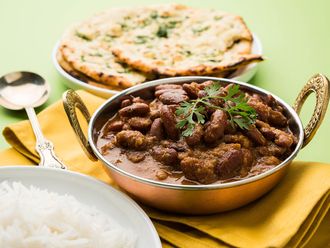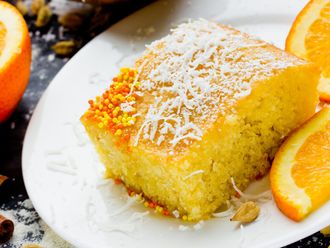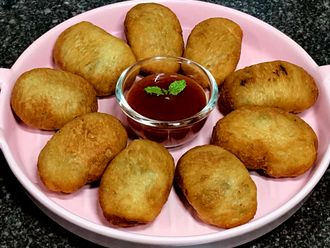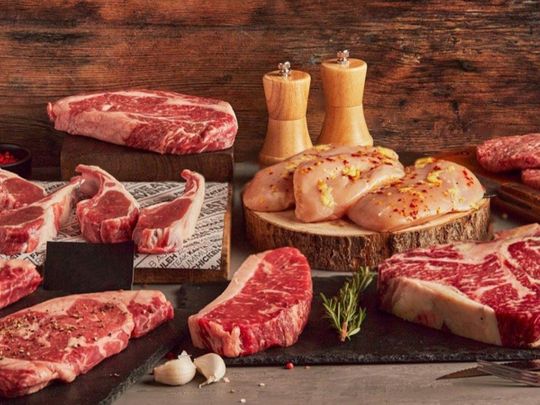
Have you ever brought meat that took a really long time to cook? If you have, chances are you bought the wrong meat cut. Being aware about the different kinds of meat cuts is quite a useful skill to have; because not only would you know how to choose your meat, you would also know how to buy it at a nominal rate.
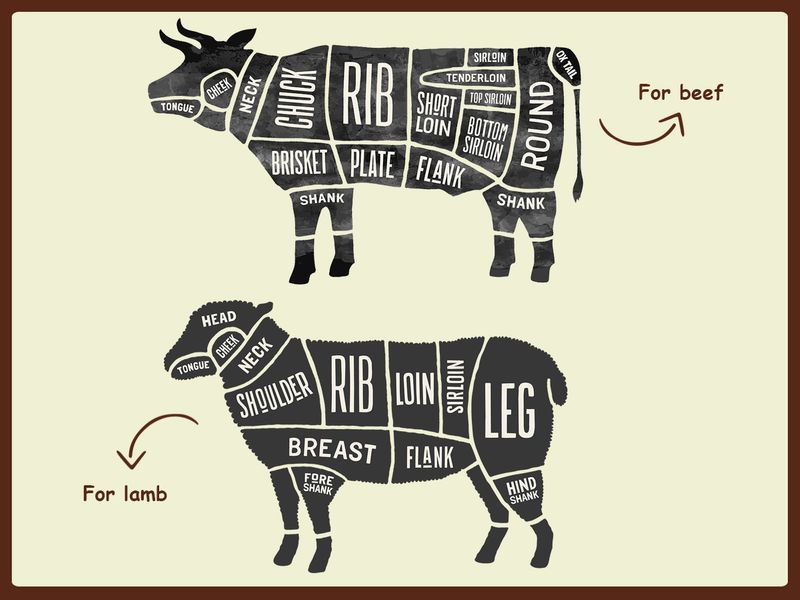
If you are someone who has a tough time finding the perfect meat cut for that steak you’ve been planning to grill, fret not, because Gulf News Food has you covered. We spoke to Lebanese expatriate Mahdi Jaber, the co-founder of The Meat Avenue in Dubai, who told us about the five main types of meat cuts popular in the UAE:
1. The ribeye steak
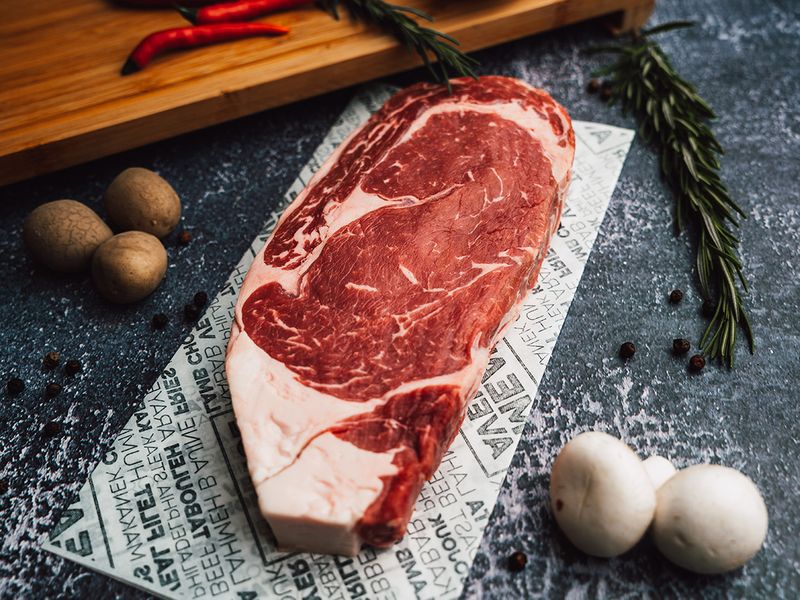
The ribeye steak, often known as scotch fillet or entrecote, is one of the most popular steak cuts across the world. It comes from the Longissimus Dorsi muscle, which runs down the spine, and has a tender texture. Marbled with fat running through the meat, the title ‘ribeye’ comes from ‘eye’ of fat found in the middle of the meat. It is also the most expensive of all the meat cuts.
The ribeye can come anywhere from the sixth to the twelfth rib, and that would dictate how it should be ideally cooked. “Most commonly used for grilling, ribeye steak is a popular prime cut of beef that’s generally large in size and quite filling. This cut comes from the cow’s upper rib area and is very fatty, which ensures the steak remains really juicy, even when it has been cooked on high heat.”
Optimum cooking method and time: “Ribeye is most often grilled, for four to five minutes on each side, depending on the thickness of the steak, over a very high heat.”
Texture and taste: “Ribeye is the most marbled steak of the prime cuts with lots of fat on it, which enhances the flavour of the beef giving it a super delicious beefy and almost buttery taste. This also gives it a bit more chew, however it is still a very tender cut of meat and the fat can be cut off if the consumer doesn’t like it.”
The ribeye is often mistaken for the New York strip as well. The latter has a thicker rim of fat, and has a tighter texture. New York strips are best cooked on a high flame and quickly. The meat must be flipped over every 30 seconds for an even cook and nice sear.
2. Flank steak
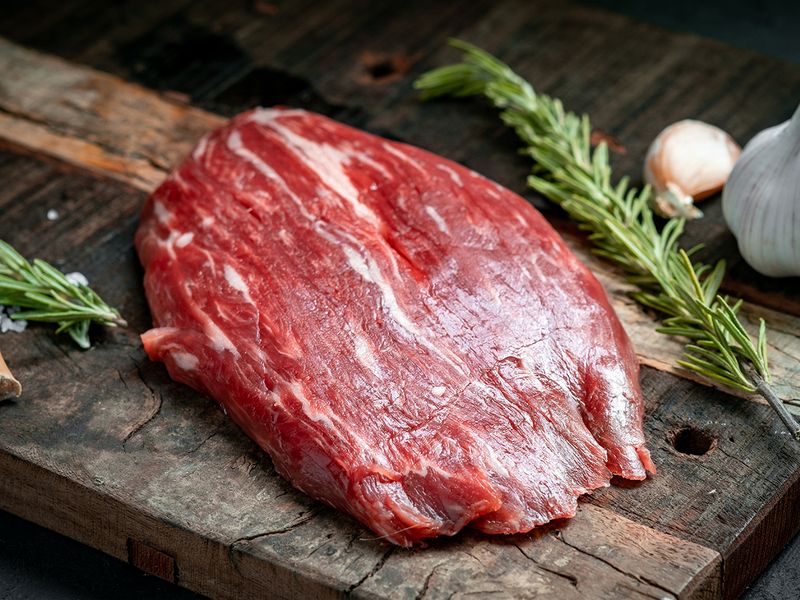
Flank steaks have little to no fat, and is quite budget friendly. Since it is a belly muscle, it can be tough if overcooked, however, the trick is to marinate it well. Leave it in a marinade for a few hours, and you will have tender meat, packed with flavour. “Flank steak is most commonly served as a grilled meat at a BBQ-style dinner. It’s a very lean cut, making it an all-rounding meat suitable also for roasting, broiling or sautéing. Flank steak is best grilled and produces great results when it’s marinated in garlic and thyme – or any other suitable marinades that work well – for a minimum of four hours in the refrigerator.”
Optimum cooking method and time: “To cook, pop the flank on a fiery hot barbeque and grill for three to four minutes on each side, to preferred doneness. Bear in mind that because it’s a lean cut, it may become dry and tough if overcooked.”
Texture and taste: “Flank steak is a secondary steak and definitely has more chew to it than other cuts, but what it lacks in tenderness, it produces in rich, beefy flavour – it’s a great tasting cut of beef.”
3. Lamb shoulder

Lamb shoulder can be cooked in many ways, it’s a fantastic cut.

This part of the animal works hard, so the meat from this cut will be flavoursome. However, it takes a little while before it can be tender; which is why it’s a great choice for stews and slow-roasting. Since it is taken from the bottom half of the animal, this meat cut is a cheaper alternative to the leg. “Lamb shoulder can be cooked in many ways, it’s a fantastic cut. It’s not as tender or lean as the leg of lamb, but when cooked properly the lamb shoulder produces a delicious, fall-off-the-bone meal great for the whole family. There are usually leftovers too.”
Optimum cooking method and time: “For optimal results, slow-cook in an oven in a covered cooking vessel, with rosemary, onions and garlic for five to six hours, depending on weight, at around 160C.”
Texture and taste: “Its texture is very tender and offers a little bite, while its taste is meaty and sometimes a little earthy.”
4. Short rib
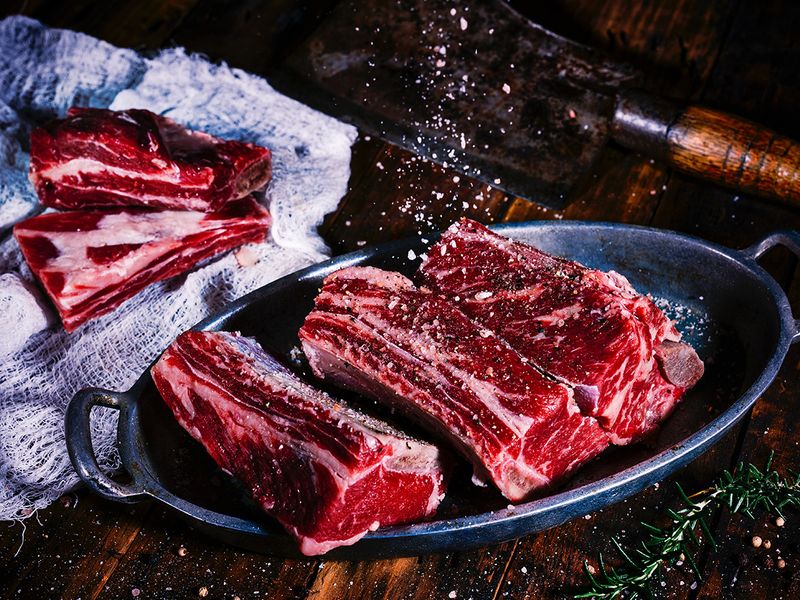
Short ribs come from the beef chuck or shoulder portion of the animal, and are also known as plate short ribs. The meat in beef short ribs are thick in texture and is often attached to the bones. Beef short ribs have quite a high amount of fat content and marbling or connective tissue, so it is best used for slow-cooking methods. “Typically, short rib is most often braised in an aromatic liquid, to achieve fall-off-the-bone tenderness. It’s great on its own or broken up and used in anything from ravioli to croquettes.”
Optimum cooking method and time: “It should be braised for a minimum of four to five hours at a low temperature of around 160C, depending on the weight”
Texture and taste: “Short rib can be best described as soft and extremely tender. It’s very meaty, although some may describe it as a little bit fatty, depending on which part is eaten.”
In terms of expense, short ribs are like ribeye steak, however, the price point is a lot cheaper.
5. Black angus T-bone
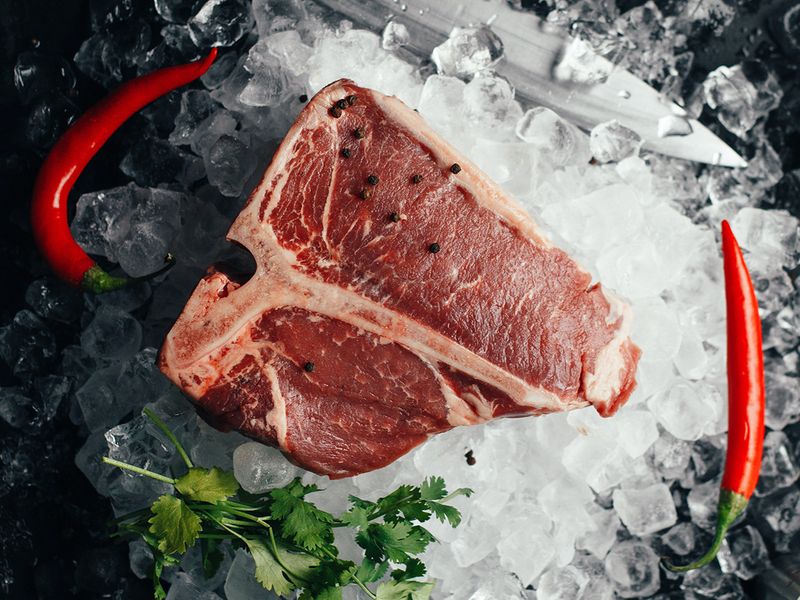
Like its name suggests, the Black Angus T-bone is shaped in the letter ‘T’, and is also commonly known as the Porterhouse steak. It combines the tender filet mignon or fillet steak, with the meaty-flavoured New York strip. To keep it simple, it is derived from the point where the tenderloin and top loin connect, and is a sizeable amount for two diners. “This steak is excellent grilled on a flaming hot grill and served by itself alongside salads, potatoes and sauces. It’s a favourite because it’s grilled on the bone which adds more flavour to the meat. Another great part about this steak is you get two cuts in one steak; a striploin on one side and a tenderloin on the other.”
Optimum cooking method and time: “Grilled and cooked to medium rare, four to six minutes per side depending on how thick the steak is. Generously seasoned with cracked pepper and sea salt. Allow to rest for six minutes before serving.”
Texture and taste: “You get two different textures, which is the great part about this steak. Tenderloin which offers a soft, melt-in-the-mouth texture, while striploin is still very tender but offers a little more flavour.”
Now that you know your meat a little better, you are less likely to make a ‘mis-steak’. So go ahead and try out our guide to making the perfect grilled steak.
Share your food stories and recipes with us at food@gulfnews.com






